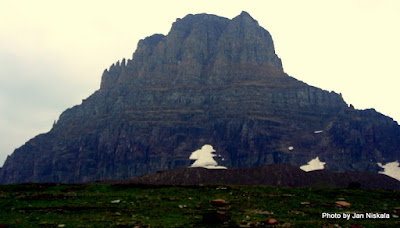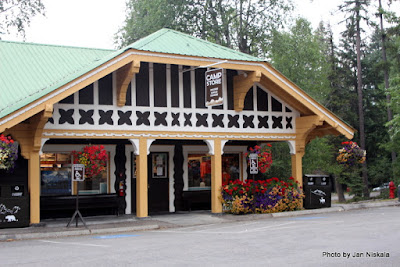Glacier
National Park and Waterton in Canada
Glacier
National Park is located in Montana on the Canada–United States border
and is shared with the Canadian provinces of Alberta and British Columbia. The
park encompasses over 1 million acres and includes parts of two mountain
ranges, over 130 named lakes, more than 1,000 different species of plants, and
hundreds of species of animals. This vast pristine ecosystem is the centerpiece
of what has been referred to as the "Crown of the Continent Ecosystem".
I need to enter a foot note even though we are just at the beginning of this chapter. The grand majority of the photos during this visit to Glacier are veiled with the smoke from the California fires. Although still awesome to be there I wish I had clear photos to share.
I need to enter a foot note even though we are just at the beginning of this chapter. The grand majority of the photos during this visit to Glacier are veiled with the smoke from the California fires. Although still awesome to be there I wish I had clear photos to share.
Soon after the establishment of the park on May 11, 1910, a number of hotels and chalets were constructed by the Great Northern Railway. These historic hotels and chalets are listed as National Historic Landmarks and a total of 350 locations are on the National Register of Historic Places. By 1932 work was completed on the Going-to-the-Sun Road, later designated a National Historic Civil Engineering Landmark, which provided greater accessibility for automobiles into the heart of the park.
Below is a misty smoky morning at Lake McDonald and McDonald Lodge. Note how clear the water is!
Of the estimated 150 glaciers which
existed in the park in the mid-19th century, only 25 active glaciers remained
by 2010. Now it is 2017 and
there are less than 25. Although scientists
studying the glaciers in the park have estimated that all the glaciers may disappear
by 2030 if current climate patterns persist, I doubt that the glaciers will
last that long. If you can’t hike into
the deep interior of the mountains you don’t see them at all!
Glacier National Park has almost all
its original native plant and animal species. Large mammals such as Grizzly
bears, moose, and mountain goats, as well as rare or endangered species like
wolverines and Canadian lynxes, inhabit the park. We only managed to see a
mountain goat and chipmunks - really cute little guys!
Hundreds of species of birds, more
than a dozen fish species, and a few reptile and amphibian species have been
documented within Glacier. Large forest fires are
uncommon in the park: However, in 2003 over 13% of the park burned. As we were leaving the park a forest fire had
started near the West Entrance of the Park.
We saw helicopters dragging huge bags through the lake and dropping the
water on the fire. Pretty amazing sight
however, even with immediate action by the fire departments the fire continued. It burned down the historic Sperry Chalet and
headed for McDonald Lodge, another famous lodge built by the Great Northern
Railway. The lodge was evacuated and
closed for the duration of this season due to the hazardous air quality in the
Lodge as well as the surrounding area but was saved from the flames that
threatened it.
Glacier National Park borders
Waterton Lakes National Park in Canada—the two parks are known as the
Waterton-Glacier International Peace Park and were designated as the world's
first International Peace Park in 1932. Both parks were designated by the
United Nations as Biosphere Reserves in 1976, and in 1995 as World Heritage
sites. In April 2017, the joint Park
received a fourth designation with "provisional Gold Tier designation as
Waterton-Glacier International Dark Sky Park through the International Dark Sky
Association", the first transboundary dark sky park. A ‘dark sky park’ is just what it sounds
like – a park that offers optimal star gazing.
Have you ever seen the Milky Way?
(And I don’t mean the candy bar!).
We also took a day and drove up to Canada to visit Waterton, a connecting park operated by Parks Canada. Waterton is open all year, but the main tourist season is during July and August. The only commercial facilities available within the park are located at the Waterton Park townsite. The park ranges in elevation from 4,232 ft. at the townsite to 9,547 ft. at Mount Blakiston.
In 1932, Waterton-Glacier International Peace Park was formed from Waterton and Glacier. It was dedicated to world peace by Sir Charles Arthur Mander on behalf of Rotary International. Although the park has a lot of diversity for its size, the main highlight is the Waterton lakes—the deepest in the Canadian Rockies—overlooked by the historic Prince of Wales Hotel National Historic Site.

Although the park was exceptionally crowded, and smoke haze was terrible we did get to see a good deal of the beautiful sights offered at an exceptional National Park.
More coming soon
Jan 🌷🌷🐾🐾

































































No comments:
Post a Comment